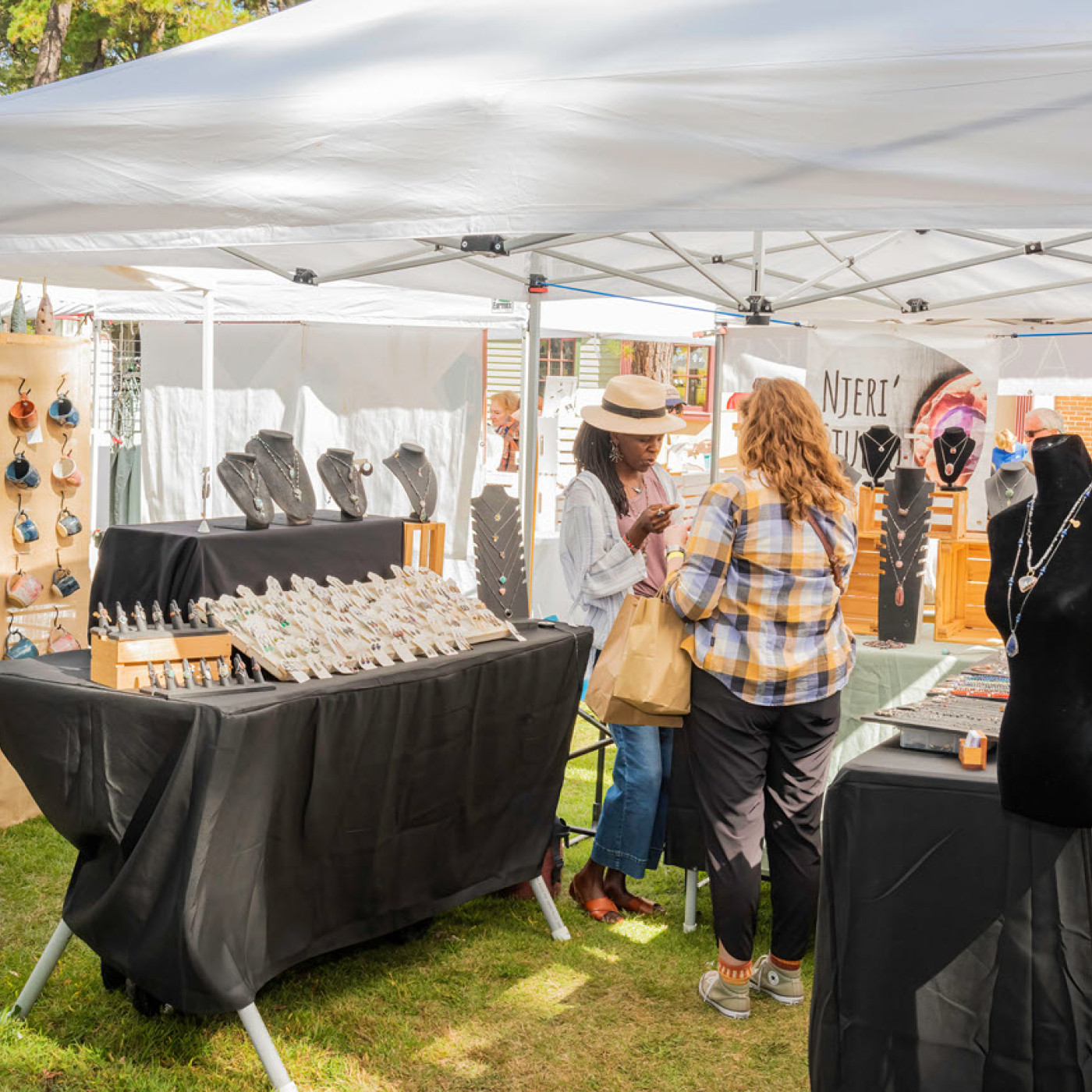How To Make Sales Follow This Promoter’s Recommendations

Artists should prioritize creating eye-catching displays. Each artist has a unique style and personality that should be reflected in their booth.
Use of color, display components, lighting, and signage are all visual elements that attract the attention of potential customers. Whether it is a calm, relaxing booth or a vibrant, exciting booth, the setup should be very inviting.
Position yourself in a space that is comfortable, allows a guest to walk into your booth, but also makes you visible. Acknowledge or greet everyone, letting them know you are present and available. Attendees should feel comfortable and experience the creativity you have to offer and enjoy looking at your work.
It is important to have your work presented in a way that the customer can relate to. Examples of how items can be used are flowers in a vase, samples on a tray, mannequins wearing clothing, and artists modeling wearables or their jewelry.
Make sure you have items priced and let the prices be visible. Story cards and descriptions about pieces are also helpful.
During the show, there may be highs and lows in traffic. It is always a good idea to refresh your booth if items have sold or readjust your displays. You can also demonstrate or work on a piece during the event — people love to see a work in progress.
Engage With Visitors
When an attendee enters the booth, engage them with a warm greeting or compliment and initiate conversation to understand their interests. Do not be afraid to talk about your work. Visitors love the stories that accompany your work and the process that goes into making it.
Highlight key pieces, share inspiration and the history behind your artwork, and how you started out. Highlight details and create a personal connection.
Ask if a customer needs assistance, wants to get a closer look, or is interested in trying something on. Make suggestions based on what their interest is. Your opinion may also aid in their decision-making process.
Pricing Your Art
A variety of different price points is important in the art market. Visitors new to the craft or art market may find that if prices are accessible, it allows them to make a commitment.
Smaller pieces, which are often priced lower, can be combined to encourage buyers to purchase multiple pieces or even to start a collection. A customer may purchase three small pieces for $100 each. That $300 spent may be a little less daunting than spending $700 on a single piece.
Including multiple-priced items may not only boost your sales but also offer a sense of investment in the artist’s work. You may start to build relationships with returning customers this way.
Always price your higher-priced pieces and best works accordingly. If you can price a few items lower, it may expand your customer base.
Multiple times, I have witnessed customers express excitement and happiness because they were able to purchase a piece of work from an artist they love but never thought they would be able to afford.
Sales After the Show
If someone is not ready to make a purchase, I recommend that the artist provide the customer with something like a business card, marketing piece, or giveaway — something with the artist’s information. It is important that they remember who you are and can reach out to you.
Many sales are made after a show. Some people need time to think about what they saw and absorb it. A visitor may not be ready to purchase or make the commitment when they are standing in front of you.
In addition, I cannot count the number of times we have received phone calls from attendees looking for an artist they saw at our show. The visitor wants to contact the artist but does not have a way to do so.
We are always happy to assist. We provide website information but do not give out an artist's phone number or email address. Our policy is to take the customer's information, contact the artist, and provide them with the potential customer’s information.
